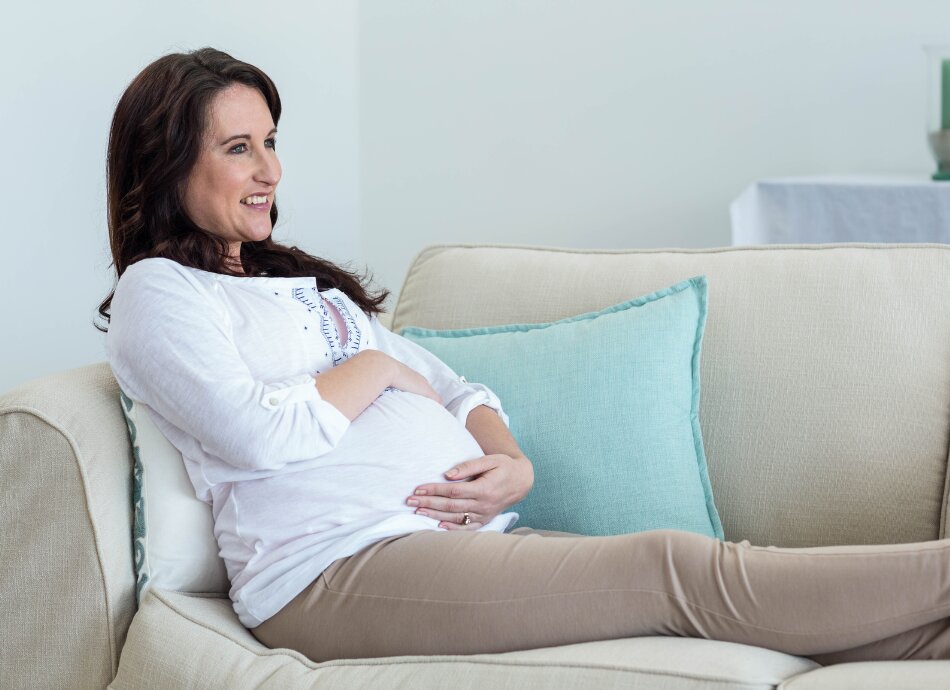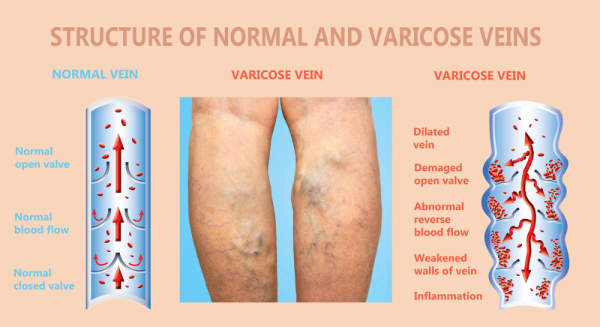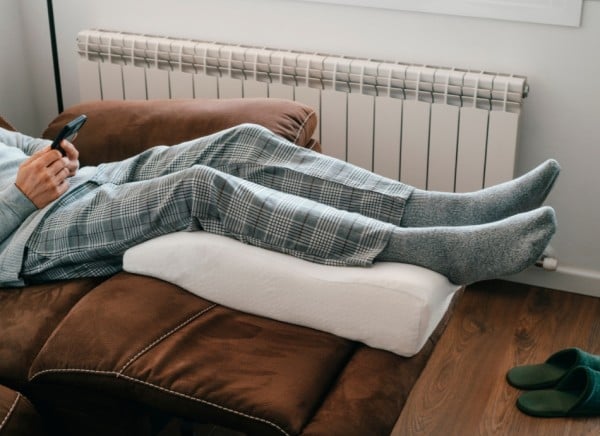Wishing everyone happy holidays and a joyful New Year from the Healthify team. Don't forget to Slip, Slop, Slap and Wrap!
Varicose veins | Mate ia auraki
Key points about varicose veins
- Varicose veins (mate ia auraki) are enlarged and swollen blue or purple veins usually found in your legs and feet.
- They can cause pain, discomfort, swelling, dry and itchy skin and an eczema rash.
- You have a greater risk of developing varicose veins if you're female, overweight, pregnant, stand for long periods or have a family history of varicose veins.
- You can usually relieve most of the symptoms yourself, but some varicose veins may need treatment with minor surgery.

Varicose veins are swollen twisted veins under your skin. They look like blue or purple bulges and are usually seen in your legs or feet. They can cause pain, discomfort, swelling, dry and itchy skin and an eczema rash.
You’re more likely to develop varicose veins if you’re female, overweight, pregnant, stand for long periods or have a family history of varicose veins.
Varicose veins are common and aren’t usually dangerous, but they may lead to serious complications, such as chronic leg wounds and blood clots for some people.
You can relieve most of the symptoms yourself but, if needed, varicose veins can be treated by a minor surgical procedure to redirect blood flow to other veins.

Image credit: Depositphotos
Varicose veins usually affect the superficial veins in your legs – the veins found just below the surface of your skin. The main symptom is enlarged, swollen veins that may not cause any concern other than their appearance.
Other symptoms can include:
- painful or aching legs
- muscle cramps
- swelling
- restless legs
- dry, itchy skin.
If they're not treated, possible complications of varicose veins include an eczema rash, recurrent skin infections, venous leg ulcers, bleeding veins and blood clots.
See your healthcare provider if your varicose veins are causing:
- pain or discomfort
- swelling of your legs or feet
- skin changes around the varicose vein
- external bleeding
- a sore on your leg that hasn’t healed after 2 weeks.
It’s rare for varicose veins to bleed, but if they do, you need to stop the bleeding quickly:
- Lie flat and raise your leg so that it’s well above the rest of your body – you can rest it on a chair or get someone to hold it up for you.
- Put a clean cloth on the area and apply pressure for at least 10 minutes.
- Call 111 and ask for an ambulance if the bleeding is heavy or doesn’t stop quickly.
Veins are one of the types of blood vessels that carry blood around your body. One-way valves in your veins open and close to stop blood from travelling the wrong way. When these valves are damaged, blood collects in the veins in your legs and this causes increased pressure and stretching of the veins which leads to varicose veins.
You're more at risk of developing varicose veins if you:
- are female
- are overweight
- stand for long periods of time during the day
- have a family history of varicose veins
- smoke
- have suffered from deep vein thrombosis previously
- are pregnant.
Your risk also increases as you get older because the veins in your legs lose their elasticity (ability to stretch) over time, and this affects how well the valves open and close.
Video: How varicose veins form
The following video explains how varicose veins form.
(Bupa, UK, 2013)
Varicose veins are usually easily diagnosed because they’re visible beneath the surface of your skin.
If your varicose veins are causing few or no symptoms, your healthcare provider will recommend things you can do to help with your symptoms. See the self-care section below.
They may also refer you to a vascular surgeon (a doctor who specialises in blood vessel surgery) for advice and treatment. Treatment might be recommended if you have symptoms such as aching or swollen legs, or a complication such as leg ulcers.
Most procedures to treat varicose veins use heat, lasers or chemicals injected into the vein to seal it off and redirect blood flow to other healthy veins. These procedures can be done under local anaesthetic with a quick recovery time.
Treatment isn’t usually recommended if you have varicose veins during pregnancy. Your veins often get better after the birth of your baby.
If you have varicose veins there are things you can do to help your symptoms and try and prevent further varicose veins developing.
- Avoid standing or sitting for long periods of time.
- Maintain a healthy weight and reduce your weight if needed.
- Stay active – this can help with managing your weight and improve blood circulation
- Raise your legs so that your feet are higher than your hips when you'[re sitting or lying down. You can put them up on the arm of the couch or raise them with a cushion.to hip height when sitting
- Use compression stockings to reduce the amount of blood pooling and pressure in your veins and encourage blood flow to your heart.
- Use a moisturising cream or lotion if you have dry, flaky or itchy skin.
- If you smoke, get help to stop, as smoking damages your veins. Read more about quitting smoking and tips on how to quit.

Image credit: Canva
Apps reviewed by Healthify
You may find it useful to look at some fitness and weight loss apps and quit smoking apps.
For most people, varicose veins aren’t dangerous and don’t cause serious complications.
Treatment for varicose veins is usually effective, but it’s important to know that they can return after treatment.
You have a higher risk of getting more varicose veins if you’re overweight or have an inactive lifestyle, so it’s important to maintain a healthy weight and exercise regularly.
Varicose veins(external link) Australian and New Zealand Society for Vascular Surgery
Brochures
Managing varicose veins – what you need to know [PDF, 180 KB] Waitemata DHB, NZ
Apps
Fitness and weight loss apps
Quit smoking apps
References
- Varicose veins(external link) NHS, UK, 2024
- Varicose veins(external link) Patient Info, UK, 2023
- Varicose veins(external link) Cleveland Clinic, US, 2021
Podcast – varicose veins update(external link) Goodfellow Unit (23 mins), NZ, 2019
Varicose veins – diagnosis and management(external link) National Institute for Healthcare and Excellence, UK, 2013(external link)
Credits: Healthify editorial team. Healthify is brought to you by Health Navigator Charitable Trust.
Reviewed by: Dr Lupe Taumoepeau, vascular surgeon, Wellington
Last reviewed:





